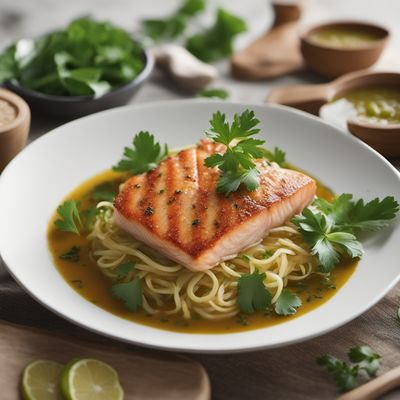
Ingredient
Lobster, norway
The King of the Sea
Lobster, Norway, also known as the King of the Sea, is a prized ingredient in culinary arts due to its delicate and sweet meat. It is often associated with luxury and indulgence, making it a popular choice for special occasions and fine dining experiences.
Origins and history
Lobster, Norway is native to the cold waters of the North Atlantic Ocean, particularly found in the coastal areas of Norway. It has a rich history dating back centuries, where it was once considered a food for the lower classes before gaining popularity among the aristocracy. Today, it is highly regarded as a delicacy and is often associated with luxurious dining experiences.
Nutritional information
Lobster, Norway is a good source of lean protein, low in fat, and rich in essential nutrients such as selenium, vitamin B12, and omega-3 fatty acids. It is also relatively low in calories, making it a healthier choice compared to other indulgent seafood options.
Allergens
People with shellfish allergies should avoid consuming Lobster, Norway as it can trigger allergic reactions. It is important to exercise caution and consult with a healthcare professional if you have any known allergies or sensitivities.
How to select
When selecting Lobster, Norway, look for live lobsters that are active and have a hard shell. The lobsters should feel heavy for their size, indicating that they are filled with meat. Avoid lobsters with soft shells or those that have an ammonia-like smell, as these are signs of spoilage.
Storage recommendations
To maintain the freshness of Lobster, Norway, store live lobsters in a cool, damp place, such as the crisper drawer of your refrigerator, covered with a damp cloth or seaweed to keep them moist. Cooked lobster meat should be stored in an airtight container in the refrigerator and consumed within 2-3 days.
How to produce
Lobster, Norway is typically harvested from the wild, making it challenging for amateurs to produce. However, if you have access to a large saltwater tank or live near the coast, you can attempt to raise lobsters by creating a suitable habitat and providing them with a diet of small fish and crustaceans.
Preparation tips
Lobster, Norway can be prepared in various ways, including boiling, steaming, grilling, or baking. To boil, bring a large pot of salted water to a rolling boil and carefully add the live lobster, cooking for about 8-10 minutes per pound. To extract the meat, crack the shell and remove the meat, which can be used in dishes like lobster rolls, bisques, or pasta sauces. The shells can also be used to make flavorful stocks and broths.
Substitutions
Crab meat can be used as a substitute for Lobster, Norway, offering a similar sweet and delicate flavor. However, keep in mind that the texture may differ slightly. Other alternatives include langoustine or prawns, which can provide a comparable taste and texture in various recipes.
Culinary uses
Lobster, Norway is highly versatile and can be used in a wide range of culinary applications. It is commonly featured in dishes like lobster bisque, lobster rolls, lobster thermidor, or simply served steamed with melted butter. Its sweet and succulent meat pairs well with flavors like garlic, lemon, butter, and herbs like tarragon or parsley.
Availability
Lobster, Norway is commonly available in the coastal regions of Norway, particularly in seafood markets and restaurants. It is also exported to various countries around the world, making it accessible to seafood enthusiasts globally.

